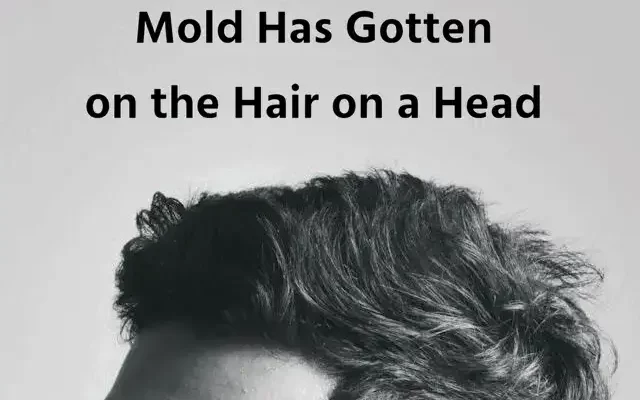Discovering mold on your hair can be alarming and distressing, but it’s important to address the issue promptly. Here are some steps you can take to effectively handle mold on your hair:
- Wash Your Hair Thoroughly: Start by washing your hair with an anti-fungal shampoo. Make sure to lather and rinse your hair thoroughly to remove any mold spores present.
- Use Vinegar: Vinegar is known for its anti-fungal properties. You can create a solution of equal parts vinegar and water and use it as a final rinse after shampooing.
- Consult a Healthcare Professional: If the mold persists or if you experience any scalp irritation, it’s essential to consult a healthcare professional or a dermatologist for further guidance and treatment.
- Prevent Future Occurrences: To prevent mold from growing on your hair in the future, ensure that your hair is properly dried after washing. Avoid covering your hair while it’s damp or wet, as this can create a conducive environment for mold growth.
- Consider Environmental Factors: Evaluate your living environment to identify any potential sources of mold growth, such as dampness or poor ventilation. Taking steps to address these factors can help prevent mold from reoccurring on your hair.
Remember, mold on your hair is a concerning issue that should be addressed promptly and effectively. By following these steps and seeking appropriate guidance, you can manage the situation and promote healthy hair and scalp hygiene.
How to Wash Mold Out of Your Hair
Mold in hair can be a nightmare, but with the right approach, it can be effectively removed. Follow these steps to wash mold out of your hair:
- Assess the Situation: Determine the extent of the mold in your hair. If it’s a small amount, you may be able to address it at home.
- Use Anti-Fungal Shampoo: Look for shampoos specifically designed to combat fungal infections, such as those containing ketoconazole or tea tree oil. Apply the shampoo generously to the affected areas and let it sit for 5-10 minutes.
- Scrub Gently: Use your fingertips to gently massage the shampoo into your scalp and hair. Be thorough but avoid scrubbing too vigorously, as this can irritate your scalp.
- Rinse Thoroughly: Rinse your hair with lukewarm water until all the shampoo is completely washed out. Make sure to rinse for at least a few minutes to ensure all traces of mold and shampoo are removed.
- Dry Completely: Mold thrives in damp environments, so it’s crucial to thoroughly dry your hair after washing. Use a clean towel to gently pat your hair dry and avoid using hair dryers on high heat, as this can further irritate your scalp.
- Clean Your Hair Tools: To prevent recontamination, clean any hairbrushes, combs, or accessories that came in contact with the mold. Soak them in a mixture of water and anti-fungal shampoo or diluted vinegar before thoroughly rinsing and allowing them to air dry.
- Prevent Future Contamination: To avoid mold in the future, ensure your hair is completely dry before styling, avoid sharing hair accessories, and regularly wash your hair tools.
How Will I Know if the Mold on My Hair is Gone?
If someone has had mold in their hair, it is crucial to determine whether it has been successfully removed. This requires a careful inspection and monitoring process to ensure that the mold is completely eliminated.
One way to assess if the mold on the hair is gone is by observing any visible signs of mold growth. Check the scalp and strands for any fuzzy, discolored patches or musty odor, which are common indicators of mold presence. If these signs are no longer visible or noticeable, it could indicate that the mold has been successfully removed.
Another way to confirm the absence of mold is to monitor any symptoms of scalp irritation or allergic reactions. If the individual no longer experiences itching, redness, or inflammation on the scalp after treatment, it suggests that the mold has been eradicated.
To ensure thorough mold removal, it is recommended to consult a healthcare professional or dermatologist. They can provide guidance on appropriate treatments and suggest follow-up steps to prevent any future mold growth. Regular scalp hygiene practices and using anti-fungal shampoos can also help in keeping the scalp healthy and mold-free.

